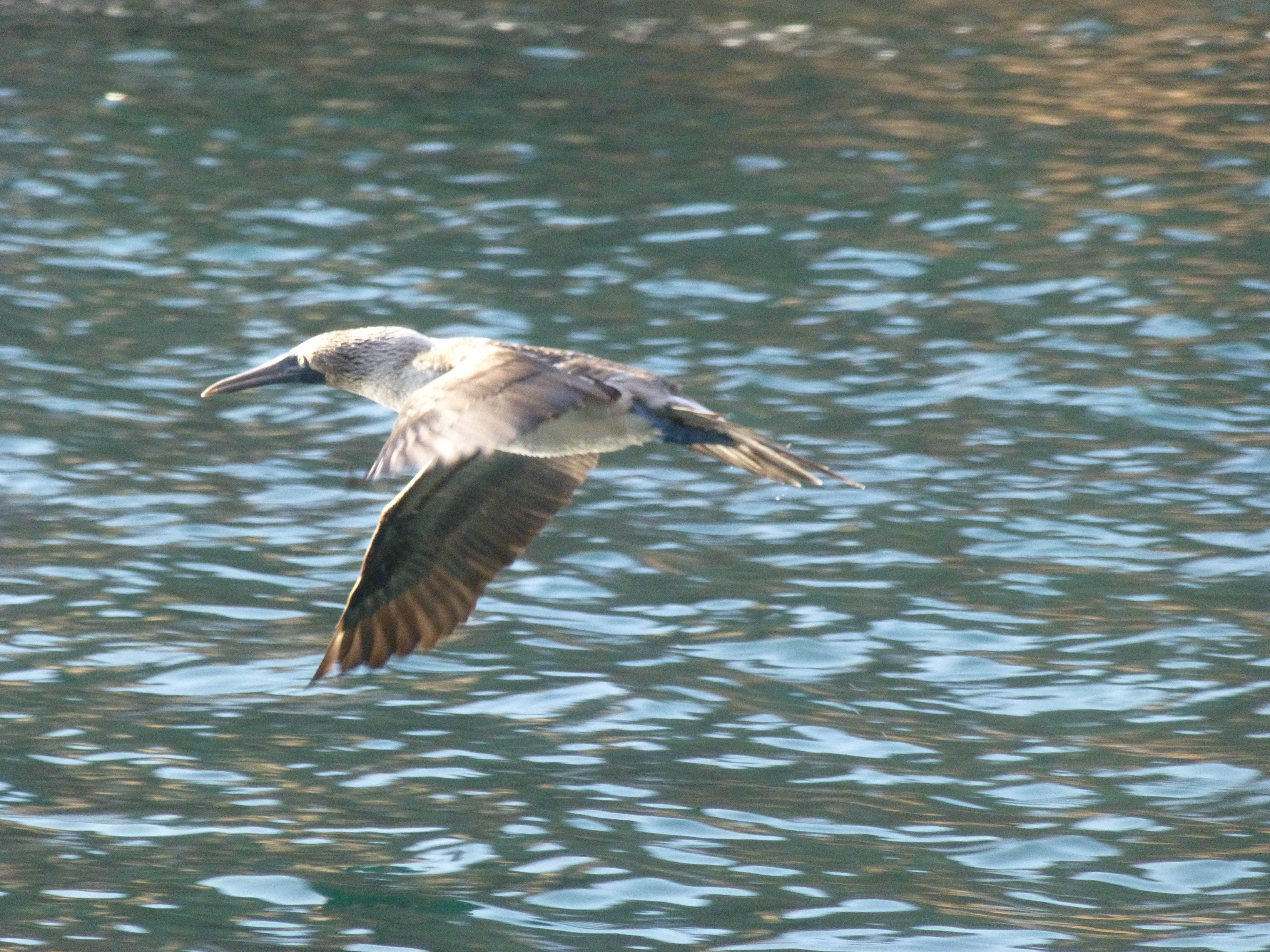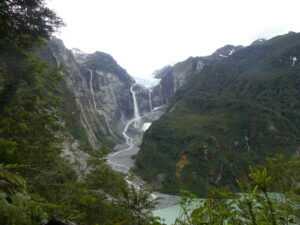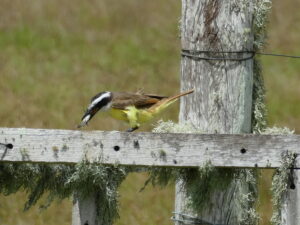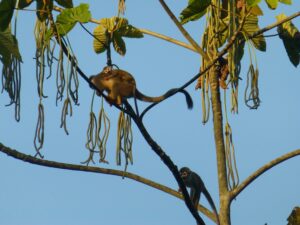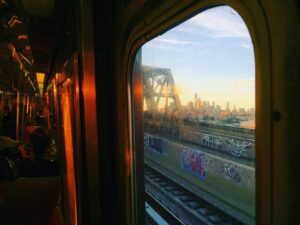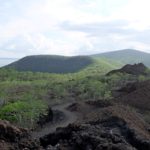
Barren landscape to thick brush and scrub. Hardened rivers of lava to black beaches.
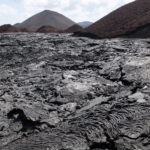
Rookeries and islets a few meters across to 100 kilometer long islands. Unique, plentiful and varying species of animals.
We suspect that many people head to the Galapagos so they can see what Darwin saw, especially the evolutionary progress of nature.
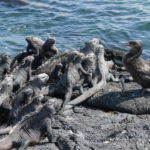
It is somewhat possible to imagine the islands through Darwin’s eyes, if you prepare yourself with some studying or a few good lectures. Yet, despite the abundance of nature here, his perspective is much tougher to gain from what you actually do see.
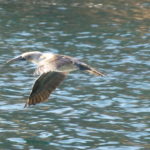
To start with, the famous finches that Darwin studied – along with other birds, iguanas and turtles – all differ in subtle ways from island to island. To observe these differences, you need to be a specialist or, in company with one, visit several of the dozen or so islands dispersed across a watery span of 45,000 square kilometers. A knowledgeable guide can recite the tale of adaptations, but even a week here won’t reveal details of the natural laboratory to most visitors.
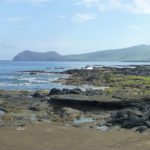
Besides, what made all the Galapagos such a perfect place for investigation are things you can hardly detect, or cannot see at all – first, the variety of habitats across the islands created by their drift over time and, second, the mix of warm and cold currents sweeping in from all directions to create waters rich in nutrients and marine life.
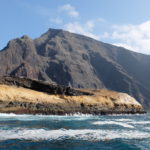
First, the variety of habitats. Like Hawaii, a much older set of islands, the Galapagos archipelago began as a volcanic hotspot from under the sea, bringing molten rock and minerals to the surface and producing an island. Then tectonic plates shifted southeast, carrying the island along, giving the hotspot an opportunity to build a new volcanic island. And on and on.
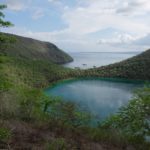
The oldest island of Espanola has drifted southeasterly while Isabella Island has elongated and connected six volcanoes in sequence into a huge sea-horse shape. The youngest of these islands are barren, rocky lava beds. The older ones, like the north end of Santa Cruz Island, are lush with vegetation, after eons of fauna slowly taking hold.
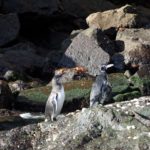
The plants, as well as all the animals, came from somewhere else wafted on the air currents, hauled by the many sea currents that meet here, or transported by visiting boats. The predominant source of the flora has been birds dropping seeds from elsewhere.
(To read our post on Volcano Alley, the mainland string of Ecuadorian volcanoes, click here.)
Once here, the species needed to adapt to the conditions they found, and then needed to keep adapting to the changes they encountered when moved along by the tectonic drift or somehow motivated to shift islands. To see the full range of adaptation and change in the Galapagos you need to move across all these islands with a discerning eye.
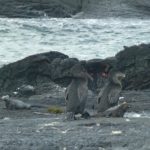
A few examples. When the cormorant species arrived on the islands, it was a flying one. With no predators here to fly away from, its wings were not as useful as its swimming ability. Over time those wings became shorter, and the bird flightless.
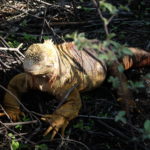
Why the land iguanas adapted from sea-going lizards – like the ever-present marine iguanas here – was far from obvious. The famous giant tortoises no longer go out to sea either, but amiably forage among the grasses for food. These evolved, an island at a time, mirroring the evolution of the islands themselves from the hotspot.

Many of the animals you see here are unique, endemic just to the Galapagos…or often to a single island there, differing in subtle ways from their progenitors or cousins on other islands – like the giant tortoises.
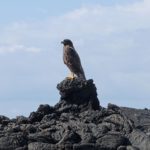
We laughed often when we identified the Galapagos sea lion or the Galapagos penguin. What else would we be seeing, after all? And, yes, some species like the Galapagos mockingbird look quite different from the mainland North American one. Yet the casual visitor needs specialist help to detect distinctness at all.

When Darwin arrived, furthermore, the islands were dense with animals, the situation we expected, but that is not now the case typically. At least in February when we visited, there were gathering spots for sea birds where dozens of each species were evident, but not rookeries of hundreds or thousands. For example, at Vicente Roca Point on Isabella’s north end, a variety of birds fished for the underwater delicacies in the cove – each numbering a few dozen.
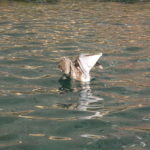
Brown pelicans crashed into the sea, noddy terns skimmed the waters, blue footed boobies sliced below the surface, and Elliott’s storm petrels danced on the ocean waves.

A handful of Galapagos penguins, some sea lions and a few flightless cormorants joined in.
Where there is plenty, your opportunity to see it depends on the season, when the different birds and reptiles are nesting or breeding. Or your opportunity depends on whether specific locations are included in your itinerary, the one that the cruise operators negotiate with the park managers. If you want to prowl among nesting boobies as some friends did, you just need to get your timing right, and choose an excursion to the most likely Galapagos islands.

Otherwise, it’s the wild, and you see the narrow slice of nature you have signed up for.
For us, the only place with innumerable animals was Fernandina Island, where thousands of marine iguanas – in various forms of ugly, like miniature dinosaurs – covered the rocky, volcanic shoals. Many of them were excavating nesting spots in the sands just a few meters inland from shore, where the ocean and the pools offer the algae or seaweed they like to eat.
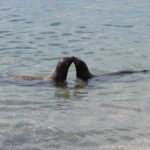
In the vicinity, cavorted a handful of sea turtles and a family or two of sea lions. The shallow pools there turn out to be ideal as training ground for the young sea lions, working on maneuvering and fishing skills by – among other things- chasing the tails of the marine iguanas wriggling by.
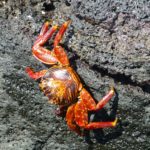
On another landing, at Urbina Bay on Isabella’s north end, we saw many of the giant tortoises and sizable land iguanas, just off our path…not in dense concentrations, but in good numbers. The male iguanas had turned various shades of orange and red, exhibiting enough color to attract females at this time of year.
So, the varying habitats across the islands and the seasonal differences make it tough to see as Darwin saw. The second reason is what you can’t see at all, in the air and within the ocean.

As we noted, winds from all corners have brought different seeds and seed-carrying birds here, all of which helped transform the barren rocks. It’s estimated that around 60% of the plant species on the islands come from seeds in bird droppings, another 30% from wind dispersal. You can learn about this, but you won’t witness what happened as Darwin knew it.

Underwater, there are four or more currents that swirl around the Galapagos, including the famed Humboldt current, the richly productive flow up from Antarctica along the Pacific coast of South America. That one meets up with other waters of different temperatures, creating a variety of micro-climates around the islands. The ocean’s resulting stew is rich with nutrients and marine life.
If you dive or snorkel, as we did, you can certainly witness the plenitude of life in the seas here, though these are not reefs with sumptuous coral as in other places. Large schools of fish pass by, along with a great diversity of species drawn by the currents and seasonal changes past the islands. Curious sea lions check you out.
But below is similar to above. Your perspective is typically a visit to the vicinity of rocks and islands, not open ocean, and what you see depends on the vagaries of fish at a given moment – like that manta ray that patrolled a rock wall while we were diving – as well as difference by time of year.
Put all this together with some study and imagination, and, yes, you can glimpse a bit of what Darwin experienced and saw.

Sadly, however, there is one other major reason you cannot walk in Darwin’s shoes: man’s intervention since his time, transforming the land with farming or predation or just plain malice.
Time and the accidents of currents and wind transformed old volcanoes into a lively habitat. Time continues to make its changes, with quickening pace.
(Also, for more pictures from Ecuador, CLICK HERE to view the slideshow at the end of the itinerary page.)


